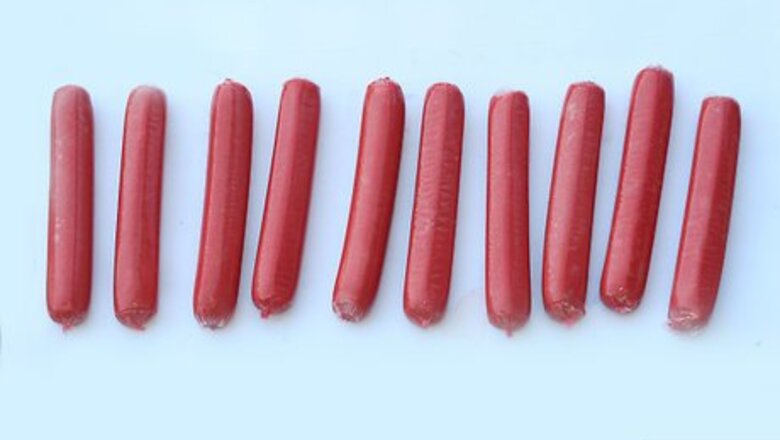
views
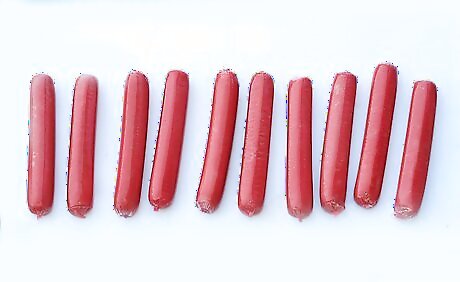
Select a food item to throw. There are a couple of qualifications. First, it must be long, thin, hard, and straight, like a frozen hot dog, for example. Second, it must be a reasonably stiff item. Third, it should be somewhere between 15 and 20 cm (6-8 inches) long; the experiment can be performed otherwise, but read on, and you will see why this size is optimal. There are lots of other items that fit these criteria including Otter Pops, celery, and churros. (If you simply can't come to grips with throwing perfectly good food, see the Tips section for some additional ideas.)

Select the spot from which to throw your mathematical cuisine. You will probably need about 180-300 cm (6-10 feet) in front of you, as you will be throwing straight ahead.
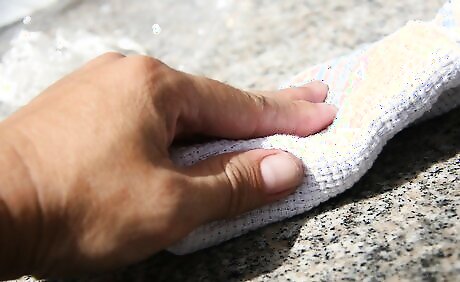
Clear the area. The place at which you are throwing should be devoid of objects that your food item could possibly run in to. So, if you are throwing in your kitchen, consider moving the table into another room or at least throwing in such a way that your food won't hit the table during its flight.
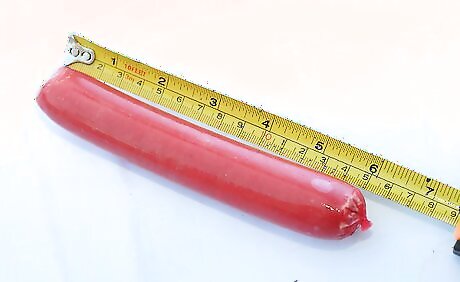
Measure the length of your projectile. A tape measure should do the trick. Be as accurate as you can, even down to the millimeter, for best results. Since length is a factor, it’s best to choose food items that are all the same size. If you’ve chosen something that isn’t naturally uniform, such as celery sticks, cut them evenly beforehand.
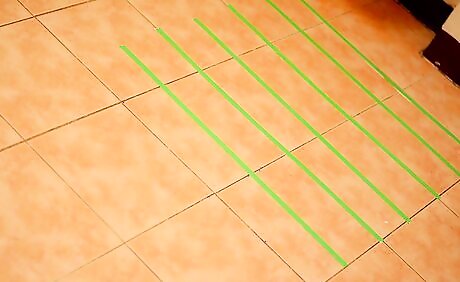
Lay down masking tape in parallel strips across the floor as far apart as your projectile is long. The strips should be perpendicular to the direction you will be throwing. If your item is 15-45 cm (6-18 inches) long, lay down about 6-10 strips; lay down fewer if longer and more if shorter.
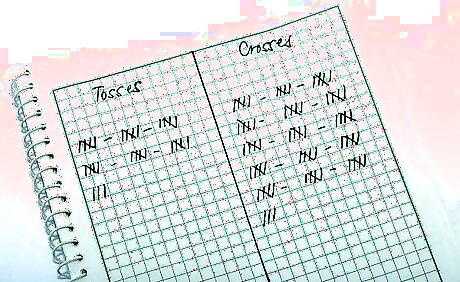
On a piece of paper, make a column for “Tosses” and another column for "Crosses." The "Tosses" column is where you’ll keep track of how many times you throw your food item. The "Crosses" column is where you’ll keep track of how many times your item lands across one of the lines. (Note that landing is not the same thing as bouncing.)
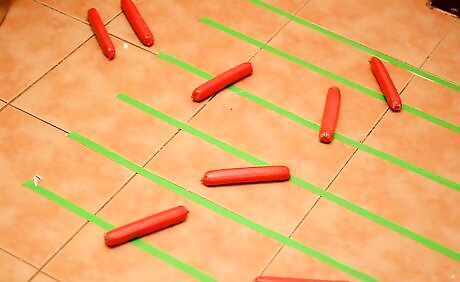
Get into position and THROW YOUR FOOD! Throw just one item at a time. Once it is at rest, observe whether or not it is crossing one of the lines. If it is, put a tick under "Crosses" and a tick under "Tosses." If it isn't, just put a tick under "Tosses." When you’ve run out of hot dogs, pick them up and re-use them, making sure to throw from the same position. Repeat this as many times as you like. You should start seeing some interesting results by around 100 to 200 throws. (This doesn't take as long as it sounds.)
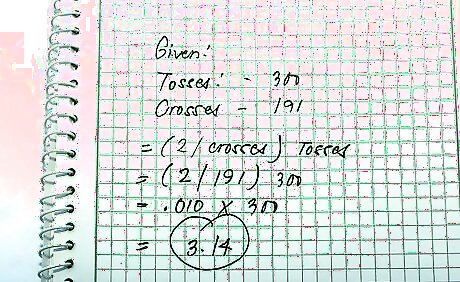
When you’re done, divide the number of crosses by 2 and divide the number of tosses by that. For example, if you threw 300 times, and it crossed 191 times, you would calculate 300/(191/2). And, to your amazement, you will now have an approximation for pi!


















Comments
0 comment